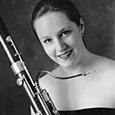All wind instruments have their little idiosyncrasies. However, I find bassoon players are especially naughty in blaming mistakes on those quirks. When students get hung up on both real and imagined limitations they put up obstacles for themselves as musicians. Here is the truth about these limitations and tools to help your bassoon player overcome them.
Real Limitations
Real limitations are problems that need to be addressed in equipment or instrument technique. These are limitations most easily cured by an attentive music teacher, even if you don’t have double reed experience.
The reed. If you have read more than one article about the bassoon or oboe you are probably already tired of hearing about the reed. The double reed requires more than getting a new one out of the box or taking the reed off the mouthpiece when the instrument is not in use. It is true that a bad reed will stop most bassoon and oboe players in their tracks. It can cause bassoon players endless troubles: notes that don’t speak, notes that are out of tune, articulation problems, and even endurance problems. If you are at all suspicious, get students a new reed. Handmade reeds are best.
The instrument. Many schools own old bassoons in poor working condition. Bassoon are expensive, and music stores don’t want to stock them because no one plays them. You can buy two bass clarinets for the price of one bassoon. I understand, but nothing will cause limitations faster than an instrument that does not work properly.
Fingerings. The bassoon does have some idiosyncrasies when it comes to fingerings. The instrument is not laid out clearly like other woodwind instruments, especially in the extreme low and high registers. However, an incorrect fingering chart can also cause problems. I find many fingering charts in band method books and little books of fingerings for all instruments are incorrect for the bassoon. Use the fingering chart provided by Fox in the Let’s Play Bassoon book. It is available as a free PDF on their website: www.foxproducts.com/sites/wwwfoxproducts.com/filesLetsPlayBassoon.pdf.
Imagined Limitations
Bassoon players dream up some limitations all by themselves. These are all the in player’s head and can be practiced out of. Never accept these excuses.
I can’t play high. Check the fingering chart for the correct fingerings. Use an ee focus in the mouth for the higher register. Saying ee raises the tongue and causes the air to spin faster. A tiny bit more reed in the mouth can help. Also, tilting the head slightly to the left can also help. Do cut beginning bassoon players some slack and keep them in the bass clef staff. Asking bassoonists who have only been playing a few months to play above the staff is setting them up for frustration.
I can’t play in sharps. Encourage your bassoon students to practice scales with sharps. Be brave and introduce G minor in band music for that F#. Many European bassoon method books begin in sharp keys first, so use some of those for supplementary studies. Try the Weissenborn Method for Bassoon (Cundy-Bettoney or Carl Fischer), Time Pieces for Bassoon Music Through the Ages in Two Volumes (The Associated Board of the Royal Schools of Music), and Bravo! Bassoon by Carol Barratt (many short songs in C major to break the Bb major habit, Boosey & Hawkes).
I can’t slur all that. Tonguing covers a multitude of sins, from fingering flubs to unresponsive reeds to breath mismanagement. Bassoon players are the biggest offenders of tonguing when they are not supposed to. The fix is complicated and involves air control, a responsive reed, an accurate fingering change from one note to another, and a music teacher with a good ear to quickly draw attention to mistakes.
Players need a great deal of air and breath control to be confident they can make it to every slurred note. Here is a breathing exercise an oboe player taught me: Have students exhale, and before inhaling again, have them put the reed in the mouth and play a long tone. This proves to students that when the air tank feels empty, there is still a little more. It also demonstrates to the student what core muscles need to be engaged to support the sound. Bassoon players also have a tendency to take unnecessary breaths.
Further obstacles include a reed that is too hard, too old, or unresponsive, which will cause players to tongue because they don’t trust the performance of the reed. In addition, accurately changing from one note to another without a finger flub comes with practice, especially of scales. Practicing scales with a variety of articulations can also help remove some of the finger flubs. Finally, make sure you can clearly hear a strong articulation from your bassoon students. Use whatever syllable you like, but do not permit a soft articulation to sneak past you. There is a time and place for soft articulation, but not when you want to be sure that your student is articulating as written in the music. If you are not hearing a clear articulation, the bassoon player is either not tonguing at all, or not completely contacting both blades of the reed with the tongue.
Conclusion
Nobody is perfect, and everyone has limitations, but the bassoon and your bassoon players can do more than students think. Bassoonists can articulate when they are supposed to, play high, and handle all key signatures. Bassoonists young and old can practice past these limitations.






